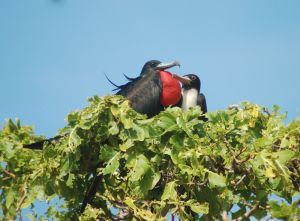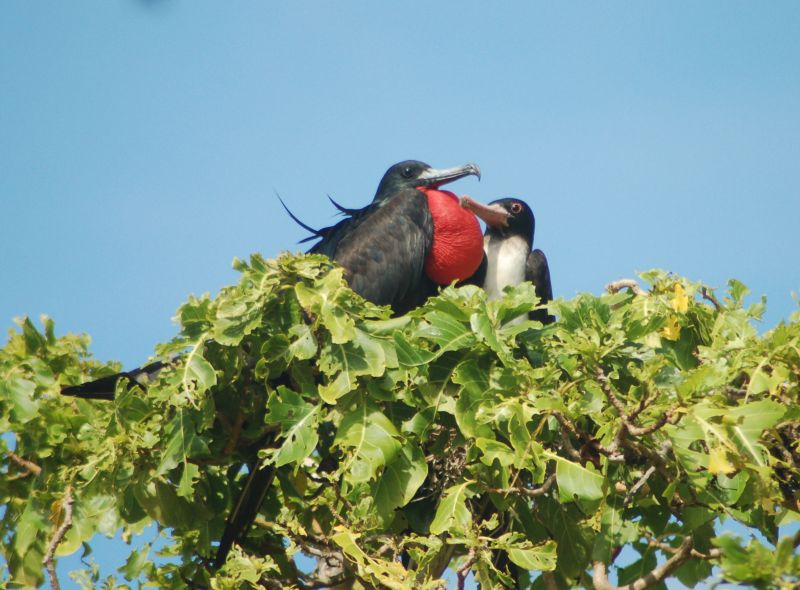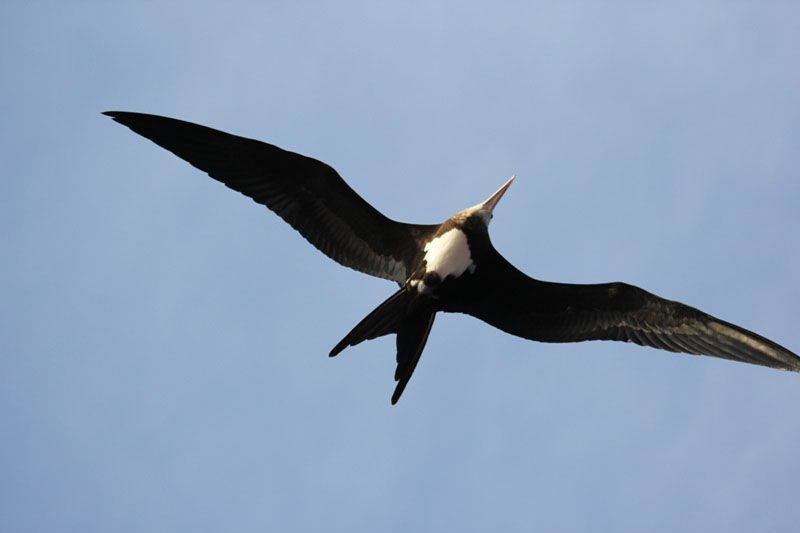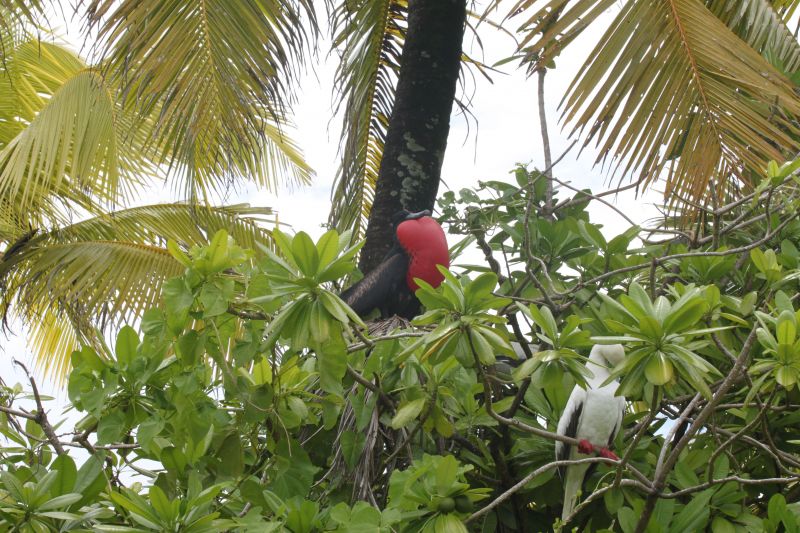

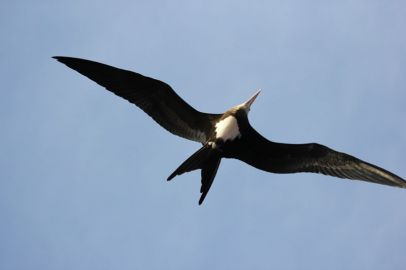

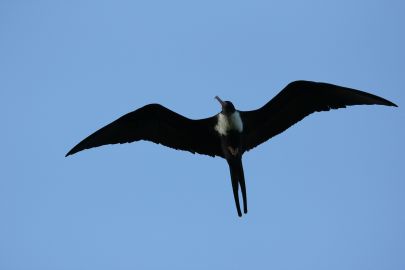


Greater Frigatebird
(Gmelin, 1789)
Description
The aerial skill of these birds as they parasitise Red-footed Boobies returning to islands with full crops is incredible. They chase the victim, nipping its wings and tail until the booby regurgitates its crop contents, which are then caught mid air before they hit the water. A good spot to watch this spectacle is the O Club on Diego Garcia in late afternoon as the boobies return to their nests or to roost on West Island. The courtship display of this species is also spectacular. The males stand on their nests and outstretch their wings, then inflate their fiery-red gular (throat) pouches and emit a far carrying and unearthly warbling “lululululu” call. It is the characteristic sight and call, which is long remembered after a visit to North Brother or Grand Coquillage.
Identification Guide: Frigatebirds are very noticeable and can be identified when clear views are had of their undersides when flying. However, the two species that occur in BIOT, Greater and Lesser Frigatebird, can be a problem pair to distinguish between, due to both species having many different plumages related to age and sex. Adult males are all black. Generally, in this species the greater extent of grey / white on the chin, breast and belly and the lack of white spurs in the axillaries (arm-pits) of females and young are diagnostic. Perched frigatebirds are also problematical to identify and this may have caused confusion in the past about which islands the two local species nest on.
Status and Distribution: Common resident species with very local breeding. It is the more numerous of the two frigatebirds present in the Chagos and is found on all atolls. It is particularly numerous wherever there is an abundance of Red-footed Booby: the species it mainly pirates upon for regurgitated food as they return from fishing excursions. Whilst easily seen in the archipelago, it is restricted to very few islands as a breeding species. In January 1975, North Brother had an estimated 300 pairs at the egg laying stage. In 1996, during February and March, this island held 85 breeding pairs. In July 2009, North Brother had 300 pairs breeding, in addition to 50 pairs on Grand Coquillage, Peros Banhos - a new breeding island. In February 2010, there were 80 pairs breeding on North Brother, 5 - 10 pairs on Middle Brother, a new breeding site and 31 pairs breeding on Grand Coquillage. This species breeds continuously throughout the year. The Three Brothers hold the largest non-breeding roosts, regularly having 500 - 1,000 birds moving in to and departing the islands at dawn and dusk. Away from this stronghold, East Island in the mouth of Diego Garcia lagoon regularly supports roosts of up to 250 birds.
 BACK
BACK